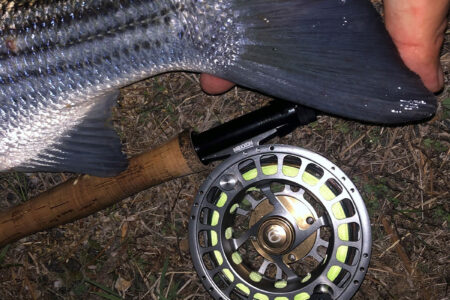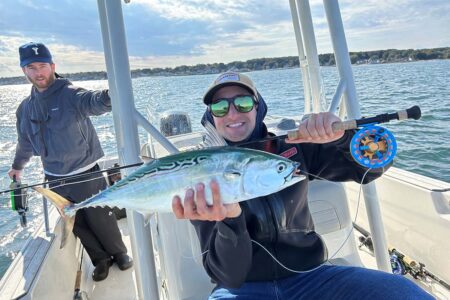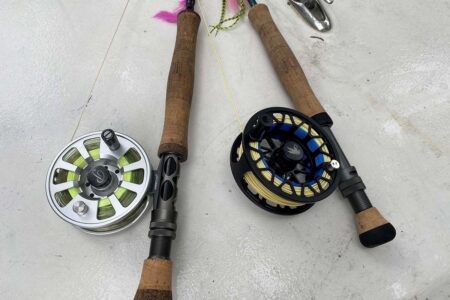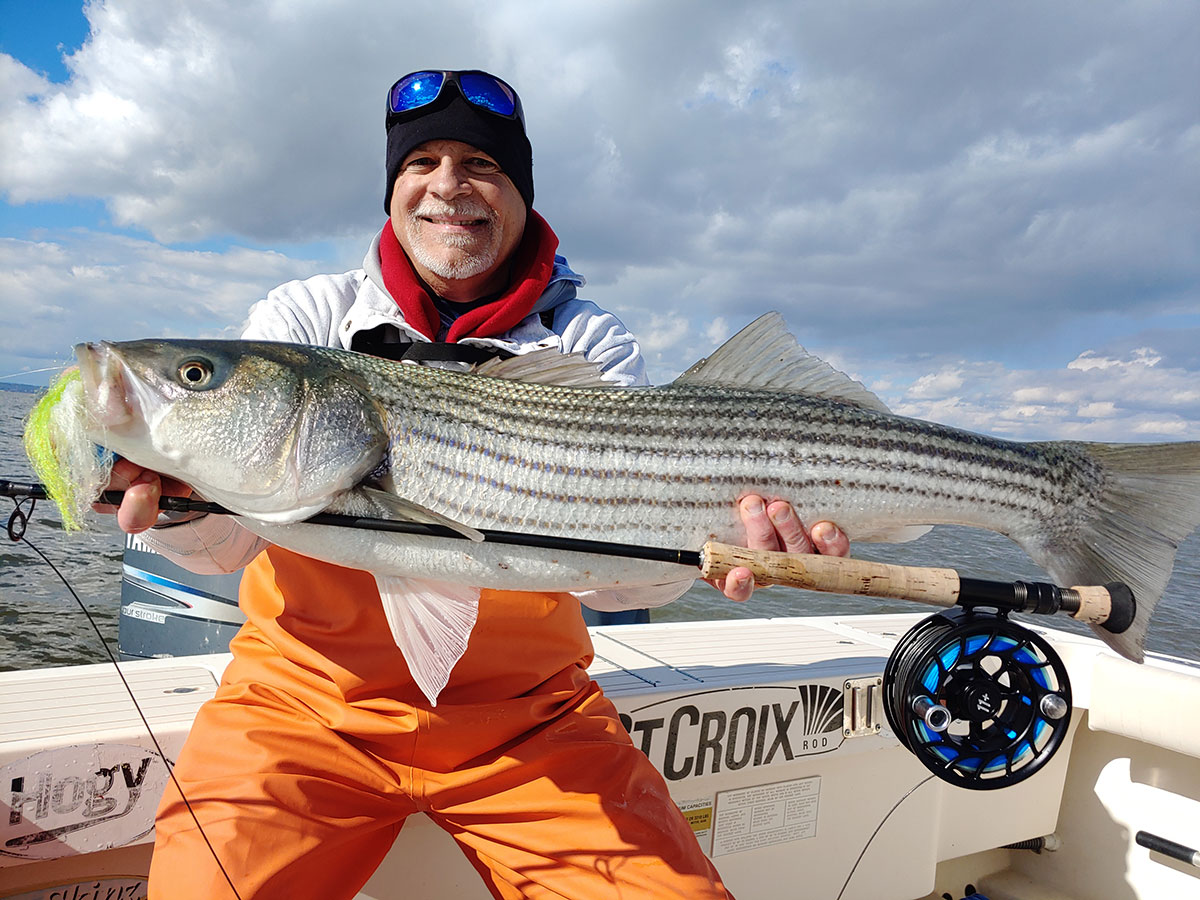
Simple techniques for your first time with the salty fly.
When I grew up back I the ‘60s I was fascinated with freshwater fly fishing. There was something about this method of fishing that captured my soul. The highlight of my week was watching ABC’s American Sportsman hosted by Curt Gowdy on Sunday afternoons; when it was a fly fishing segment my eyes were glued to the television. Nothing else existed around me at that moment. My superhero wasn’t Batman or Superman but rather Roscoe Vernon Gaddis, nicknamed Gadabout Gaddis, an avid fly fisher. He starred in The Flying Fisherman.
When I moved to the Jersey Shore in 1980 fly fishing took on a whole new twist. Now catching fish in the salt with the fly rod became my passion. I quickly learned how much easier saltwater fly fishing was when compared to freshwater fly fishing. Out in the salt there were no trees to contend with on a backcast, no snags or obstructions to deal with, and no swift currents that could sweep me off my feet. Rather the ocean was just wide open space that I could cast into whether I was fishing from the beach or the boat.
Over my 40 plus years of chartering I have looked forward to having clients that want to use the long rod. I always have it on board and am willing to teach anyone that wants to try it. I have also developed some fly fishing techniques that work but may go against the grain of what some would say is fly fishing. Casting a full fly line while making perfect loops is not my goal. But rather it is to get the fly rod to bend with a fish on the other end. So I utilize some techniques the purist might scoff at. Here are a few of them that work and work well.
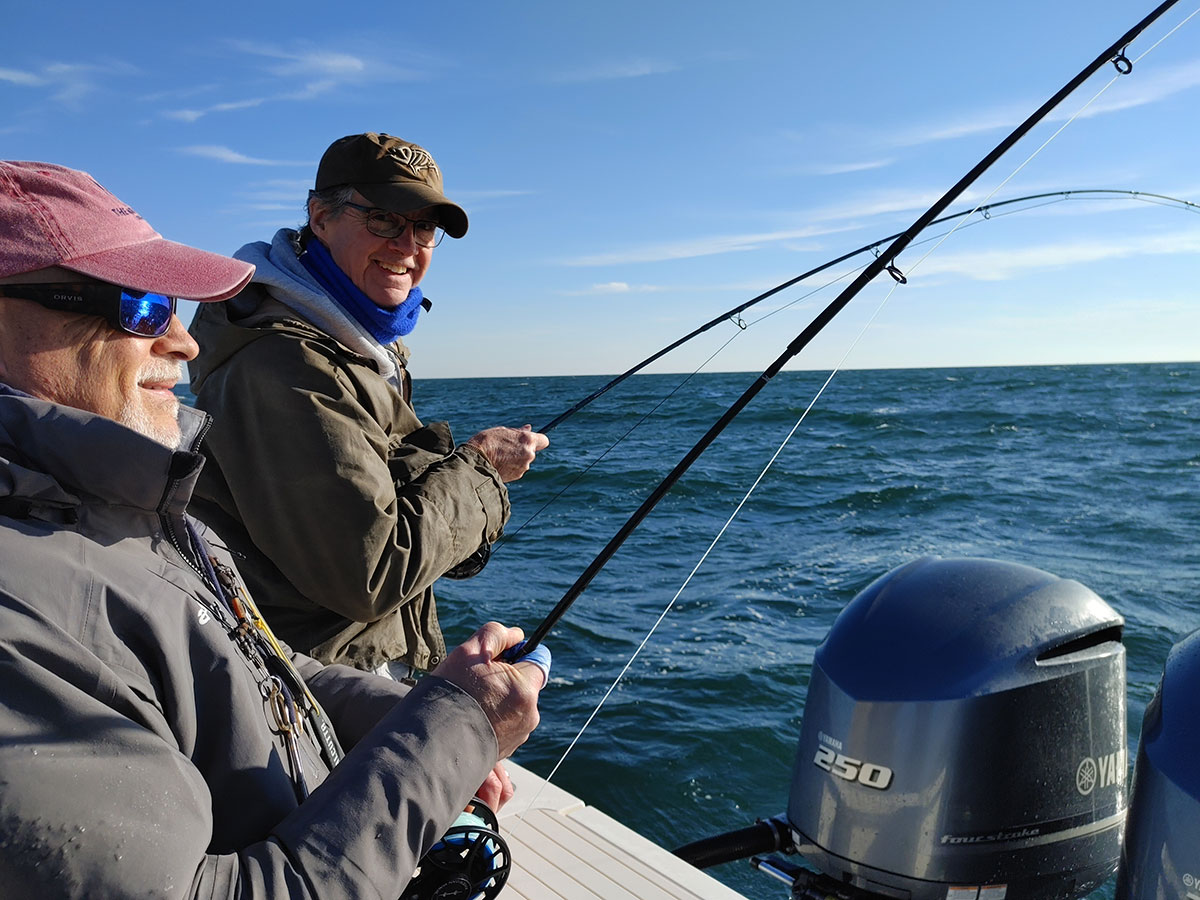
Stack Mending
This boat method of stack mending is easy and simple for anyone to use, especially for my clients who have never used a fly rod before to catch a striped bass. When bass are stacked up under the boat this method doesn’t require a cast. Instead it involves using a 350- to 400-grain sinking line with a 6-foot, 40-pound fluorocarbon leader looped-to-looped to the fly line. To stack mend one will strip out the 30-foot sinking head plus another 30 feet of the integrated running line into the water and then strip it back onto the deck.
Point your rod tip out and down over the water and let the line back into the water by moving your rod side to side waving it as if you were holding a wand in your hand with a ribbon attached to the end. This will allow the line to stack in loops on top of itself as the boat drifts away, quickly sinking down without any resistance on it. When all the line is out wait until you reach a point where the line becomes tight. At this point the line won’t sink anymore and raise up in the water column when the boat pulls on it so now it is time to begin stripping.
The sinking rate of your fly line along with the speed of your drift will determine how far down your fly can get. On my 28 Parker Sport Cabin with a 10- to 15-mph wind blowing while using 350- to 400-grain line my fly will usually get down about 30 feet before the line comes completely tight and be about 60 feet away from the boat. This method allows the fly to cover as much water as possible in both a vertical and horizontal plane. If I were to make a 60-foot cast my line with never be able to sink to this depth with the boat drifting away and pulling on it. Once the fly is stripped in just repeat the whole process over again.
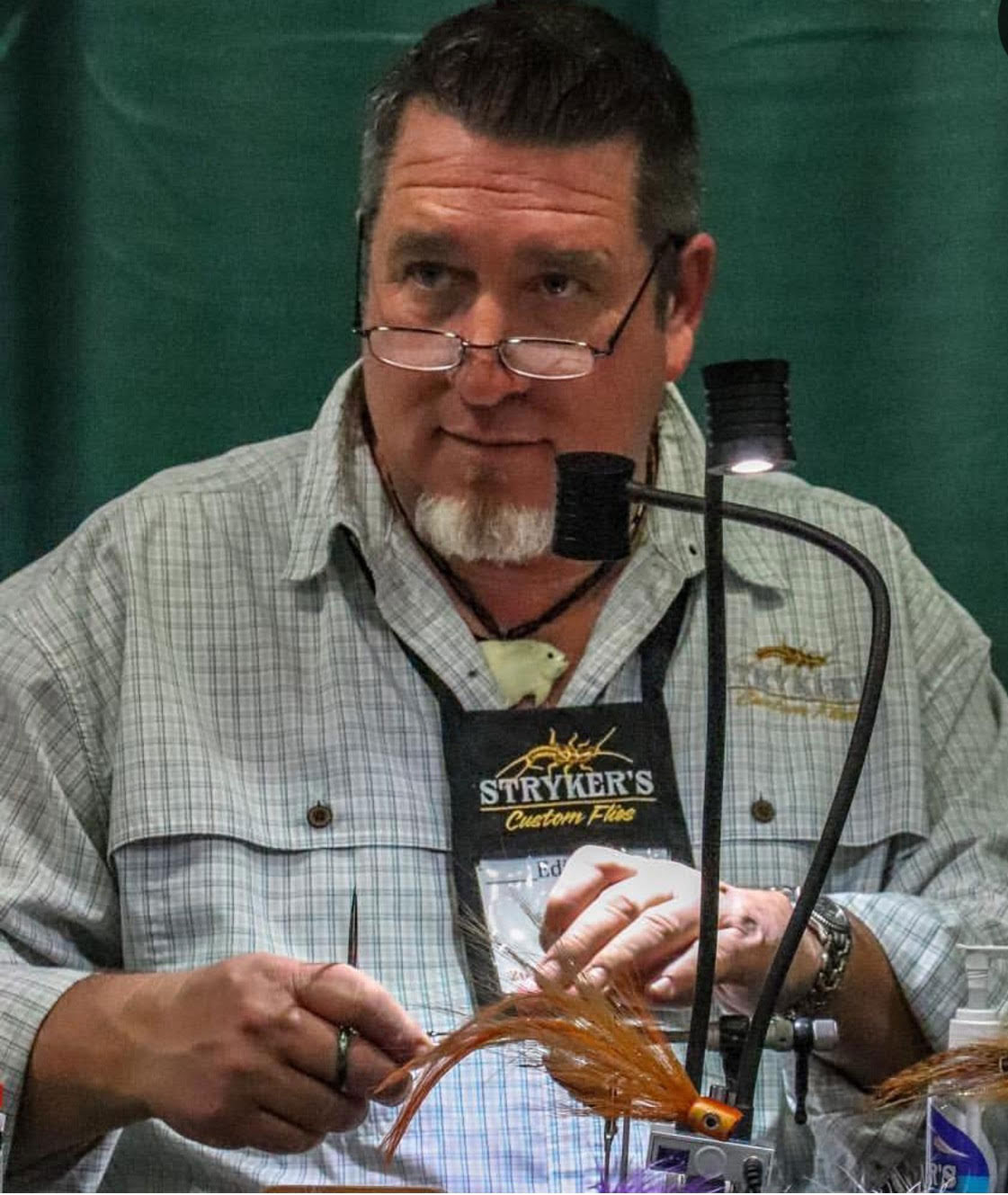
Bunker Busting Bass
I use a somewhat similar method when big bass are busting up bunker on the surface. We all know how big bass love surface commotion such as pencil poppers, spooks, and planks when they are erupting in a pod of bunker. So, I will try to create the same commotion with my fly by using big 10- to 14-inch topwater bangers or chuggers.
If you have ever tried to cast one of these flies you know that casting one more than 15 yards or so takes a lot of skill. And if the wind is up in your face your cast goes basically nowhere. So what I like to do while using a floating line is to size up several pods of bunker in a row and have my client let out 3/4 of the fly line while I slowly and stealthily drive the boat away and over the pods. The fly line is now stretched out and when retrieved one can strip the fly back to the boat over the pods for about 75 feet. Covering 75 feet with your retrieve verses 15 feet of retrieve will make a world of difference in your success.
Again my goal is for clients to have the rod to bend with a fish on it rather than to become a member of the casting hall of fame.
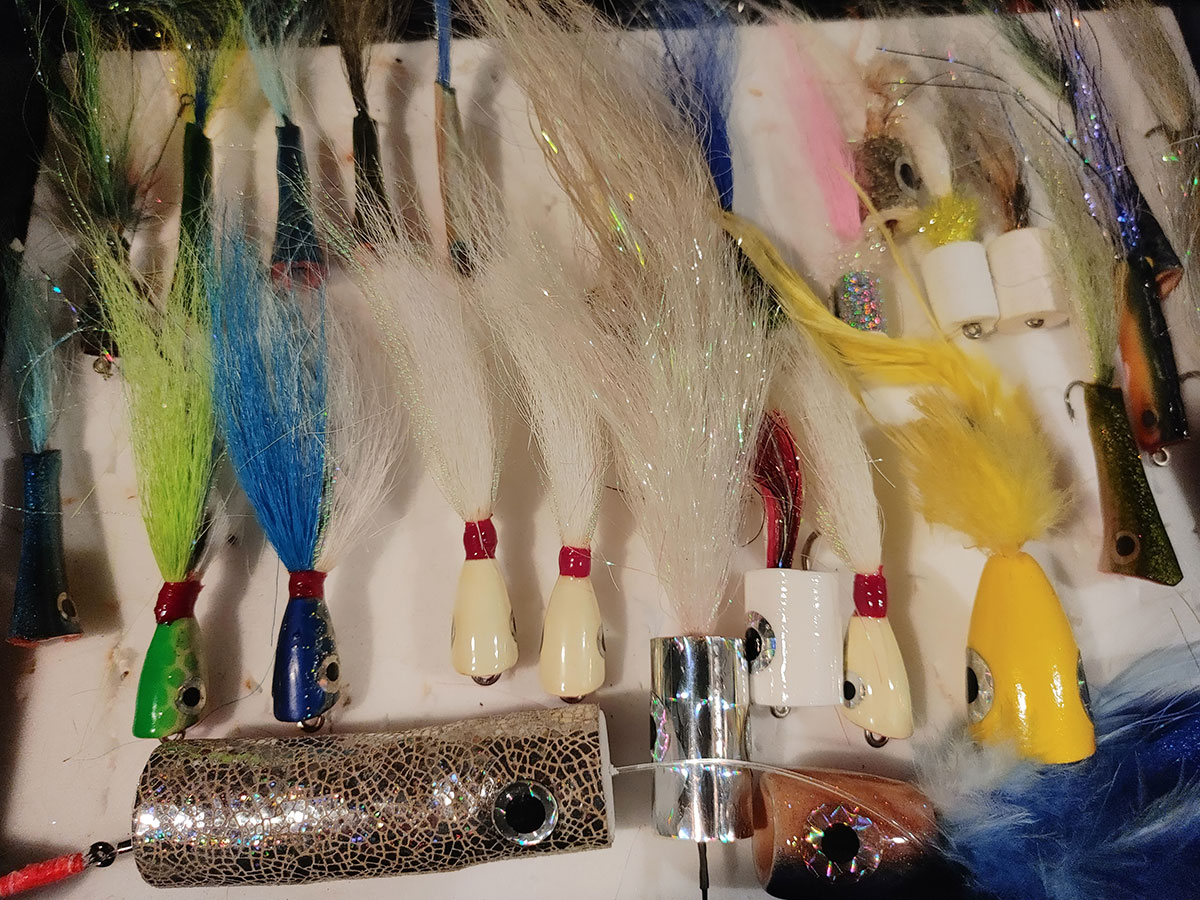
Take Me To Your Leader
When I first stated saltwater fly fishing in the ‘90s I used to tie elaborate four section leader systems. In fact you can search the archives of The Fisherman and probably find an article I wrote back then specifically on this subject matter. This old leader system began with a short 4-inch piece of 50-pound hard mono nail knotted to the fly line. This mono had a perfection loop in the other end. I then looped a 40-pound, 2-foot piece of fluorocarbon to this which then tapered down in 2-foot section via a blood knot to 30-pound, 25-pound, and then the 20-pound that was tied to my fly. The idea was that tapering the leader in this manner would help to turn the leader over and lay out the fly; your full loop therefore could look textbook.
Over the years I learned that this elaborate leader system or making that perfect loop was not necessary to get a fish to bite. Instead keeping your leader system simple was and is just as effective. For decades now I just use a straight 8-foot section of 40-pound fluorocarbon looped-to-looped to my welded loop in my fly line for striped bass. If the bass are on the small side I will drop the leader down to 30-pound test.
To keep it even simpler you can eliminate the fluorocarbon and just use plain mono. Fluorocarbon doesn’t help you to get a bite over mono since the waters we are fishing are usually always green or stained and not exactly crystal clear. The reason I use fluorocarbon is that it is more abrasion resistant that mono. So if the leader pulls along the side of a big bass or along the side of the boat because a client is not controlling the fish properly the chances of a breakoff are reduced.
Any decked out saltwater fly fisherman would include a stripping basket as part of their attire but on the boat a stripping basket is not necessary. Instead the deck of the boat becomes your stripping basket. It is very simple to just strip and throw the line straight down next to yourself. The line will coil nicely on top of itself without any tangles. When doing this make sure you do not move your feet at all, keep them stationary. This way you will not step on your line and it will shoot uninhibited on your next cast. If you have a washdown hose near the rear of your boat that can catch or tangle your line just cover it with a mat or towel and you are good to go.
